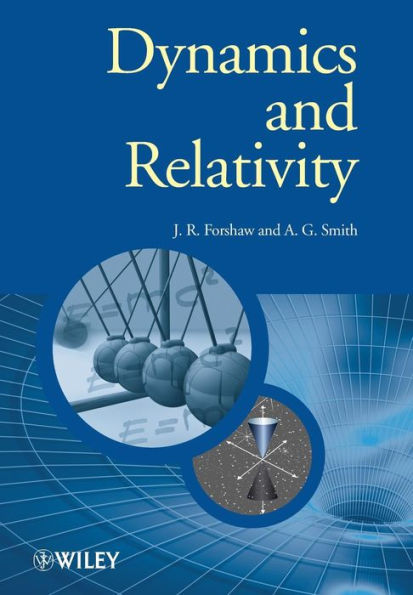Table of Contents
Editors’ Preface to the Manchester Physics Series xi
Author’s Preface xiii
I Introductory Dynamics 1
1 Space, Time and Motion 3
1.1 Defining Space and Time 3
1.1.1 Space and the classical particle 4
1.1.2 Unit vectors 6
1.1.3 Addition and subtraction of vectors 6
1.1.4 Multiplication of vectors 7
1.1.5 Time 8
1.1.6 Absolute space and space-time 10
1.2 Vectors and Co-ordinate Systems 11
1.3 Velocity and Acceleration 14
1.3.1 Frames of reference 16
1.3.2 Relative motion 16
1.3.3 Uniform acceleration 18
1.3.4 Velocity and acceleration in plane-polar co-ordinates: uniform circular motion 20
1.4 Standards and Units 21
2 Force, Momentum and Newton’s Laws 25
2.1 Force and Static Equilibrium 25
2.2 Force and Motion 31
2.2.1 Newton’s Third Law 35
2.2.2 Newton’s bucket and Mach’s principle 39
2.3 Applications of Newton’s Laws 41
2.3.1 Free body diagrams 41
2.3.2 Three worked examples 42
2.3.3 Normal forces and friction 46
2.3.4 Momentum conservation 49
2.3.5 Impulse 51
2.3.6 Motion in fluids 51
3 Energy 55
3.1 Work, Power and Kinetic Energy 56
3.2 Potential Energy 61
3.2.1 The stability of mechanical systems 64
3.2.2 The harmonic oscillator 65
3.2.3 Motion about a point of stable equilibrium 67
3.3 Collisions 68
3.3.1 Zero-momentum frames 68
3.3.2 Elastic and inelastic collisions 71
3.4 Energy Conservation in Complex Systems 75
4 Angular Momentum 81
4.1 Angular Momentum of a Particle 81
4.2 Conservation of Angular Momentum in Systems of Particles 83
4.3 Angular Momentum and Rotation About a Fixed Axis 86
4.3.1 The parallel-axis theorem 94
4.4 Sliding and Rolling 95
4.5 Angular Impulse and the Centre of Percussion 97
4.6 Kinetic Energy of Rotation 99
II Introductory Special Relativity 103
5 The Need for a New Theory of Space and Time 105
5.1 Space and Time Revisited 105
5.2 Experimental Evidence 108
5.2.1 The Michelson-Morley experiment 108
5.2.2 Stellar aberration 110
5.3 Einstein’s Postulates 113
6 Relativistic Kinematics 115
6.1 Time Dilation, Length Contraction and Simultaneity 115
6.1.1 Time dilation and the Doppler effect 116
6.1.2 Length contraction 121
6.1.3 Simultaneity 123
6.2 Lorentz Transformations 124
6.3 Velocity Transformations 129
6.3.1 Addition of velocities 129
6.3.2 Stellar aberration revisited 130
7 Relativistic Energy and Momentum 135
7.1 Momentum and Energy 135
7.1.1 The equivalence of mass and energy 142
7.1.2 The hint of an underlying symmetry 144
7.2 Applications in Particle Physics 145
7.2.1 When is relativity important? 146
7.2.2 Two useful relations and massless particles 149
7.2.3 Compton scattering 152
III Advanced Dynamics 157
8 Non-inertial Frames 159
8.1 Linearly Accelerating Frames 159
8.2 Rotating Frames 161
8.2.1 Motion on the earth 165
9 Gravitation 173
9.1 Newton’s Law of Gravity 174
9.2 The Gravitational Potential 177
9.3 Reduced Mass 182
9.4 Motion in a Central Force 184
9.5 Orbits 186
10 Rigid Body Motion 197
10.1 The Angular Momentum of a Rigid Body 198
10.2 The Moment of Inertia Tensor 200
10.2.1 Calculating the moment of inertia tensor 203
10.3 Principal Axes 207
10.4 Fixed-axis Rotation in the Lab Frame 212
10.5 Euler’s Equations 214
10.6 The Free Rotation of a Symmetric Top 216
10.6.1 The body-fixed frame 216
10.6.2 The lab frame 218
10.6.3 The wobbling earth 223
10.7 The Stability of Free Rotation 224
10.8 Gyroscopes 226
10.8.1 Gyroscopic precession 226
10.8.2 Nutation of a gyroscope 232
IV Advanced Special Relativity 237
11 The Symmetries of Space and Time 239
11.1 Symmetry in Physics 239
11.1.1 Rotations and translations 240
11.1.2 Translational symmetry 245
11.1.3 Galilean symmetry 246
11.2 Lorentz Symmetry 247
12 Four-vectors and Lorentz Invariants 253
12.1 The Velocity Four-vector 254
12.2 The Wave Four-vector 255
12.3 The Energy-momentum Four-vector 258
12.3.1 Further examples in relativistic kinematics 259
12.4 Electric and Magnetic Fields 262
13 Space-time Diagrams and Causality 267
13.1 Relativity Preserves Causality 270
13.2 An Alternative Approach 272
14 Acceleration and General Relativity 279
14.1 Acceleration in Special Relativity 279
14.1.1 Twins paradox 280
14.1.2 Accelerating frames of reference 282
14.2 A Glimpse of General Relativity 288
14.2.1 Gravitational fields 290
A Deriving the Geodesic Equation 295
B Solutions to Problems 297




